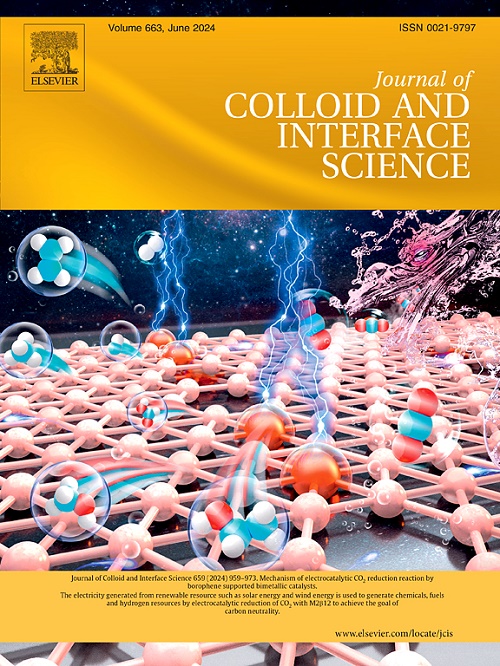In situ construction of S-scheme heterojunctions between BiOCl and Bi-MOF for enhanced photocatalytic CO2 reduction and pollutant degradation
IF 9.4
1区 化学
Q1 CHEMISTRY, PHYSICAL
引用次数: 0
Abstract
Recently, photocatalytic technology has been widely used as a sustainable method to address environmental pollution issues. Herein, BiOCl/Bi-MOF (BOC/Bi-MOF) based semiconductor photocatalysts with S-scheme heterojunction were fabricated by an in situ growth method, and the photocatalytic activity of the materials was explored for CO2 reduction and pollutant degradation. As confirmed by density functional theory calculations and physiochemical characterizations, the established S-scheme heterojunction confers enhanced carrier separation efficiency and retention of redox capability to the BOC/Bi-MOF. Through an improved combination of charge separation and surface reactions, the prepared BOC/Bi-MOF efficiently reduces CO2 solely to CO. The heterojunction as catalyst is more durable and effective than any of its single component. The CO evolution rate of the optimized composite catalyst was 7.66 and 33.10 times of those of BiOCl and Bi-MOF, respectively. In addition, BOC/Bi-MOF exhibits a high efficiency in the photocatalytic degradation of the pollutant rhodamine B (RhB) in aqueous environments, and the pollutant was completely removed within 20 min. Due to the generation of interfacial potential differences, the internal electric field (IEF) generation at heterogeneous interfaces facilitates the separation and transfer of photogenic charges. This work demonstrated a practical and effective route for in situ growth of S-scheme heterojunctions with high efficiencies in CO2 reduction and RhB degradation.

在 BiOCl 和 Bi-MOF 之间原位构建 S 型异质结,以增强光催化二氧化碳还原和污染物降解。
近年来,光催化技术作为一种解决环境污染问题的可持续方法得到了广泛应用。本文采用原位生长法制备了基于生物OCl/Bi-MOF(BOC/Bi-MOF)的S型异质结半导体光催化剂,并探讨了该材料在还原二氧化碳和降解污染物方面的光催化活性。密度泛函理论计算和物理化学表征证实,所建立的 S 型异质结提高了 BOC/Bi-MOF 的载流子分离效率,并保留了其氧化还原能力。通过改进电荷分离和表面反应的组合,制备的 BOC/Bi-MOF 能有效地将 CO2 还原成 CO。作为催化剂的异质结比任何单一成分都更持久有效。优化后的复合催化剂的 CO 演化率分别是 BiOCl 和 Bi-MOF 的 7.66 倍和 33.10 倍。此外,BOC/Bi-MOF 在水环境中光催化降解污染物罗丹明 B(RhB)的效率很高,在 20 分钟内就能完全去除污染物。由于界面电位差的产生,异质界面上产生的内电场(IEF)促进了光生电荷的分离和转移。这项工作为原位生长 S 型异质结提供了一条实用而有效的途径,可实现高效的二氧化碳还原和 RhB 降解。
本文章由计算机程序翻译,如有差异,请以英文原文为准。
求助全文
约1分钟内获得全文
求助全文
来源期刊
CiteScore
16.10
自引率
7.10%
发文量
2568
审稿时长
2 months
期刊介绍:
The Journal of Colloid and Interface Science publishes original research findings on the fundamental principles of colloid and interface science, as well as innovative applications in various fields. The criteria for publication include impact, quality, novelty, and originality.
Emphasis:
The journal emphasizes fundamental scientific innovation within the following categories:
A.Colloidal Materials and Nanomaterials
B.Soft Colloidal and Self-Assembly Systems
C.Adsorption, Catalysis, and Electrochemistry
D.Interfacial Processes, Capillarity, and Wetting
E.Biomaterials and Nanomedicine
F.Energy Conversion and Storage, and Environmental Technologies

 求助内容:
求助内容: 应助结果提醒方式:
应助结果提醒方式:


